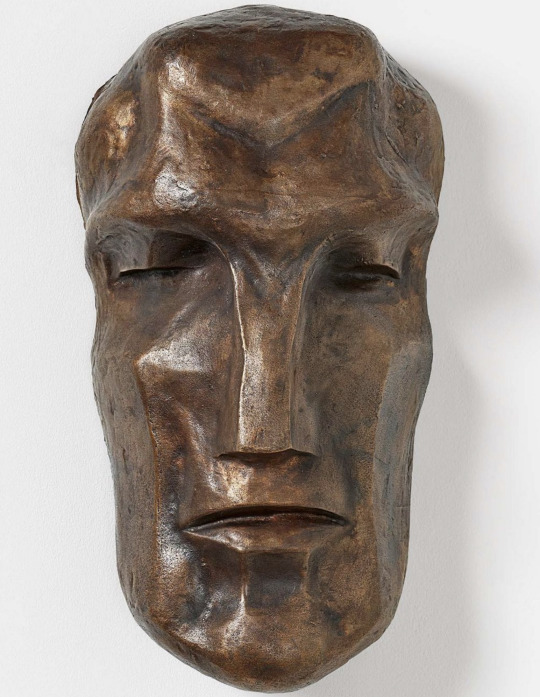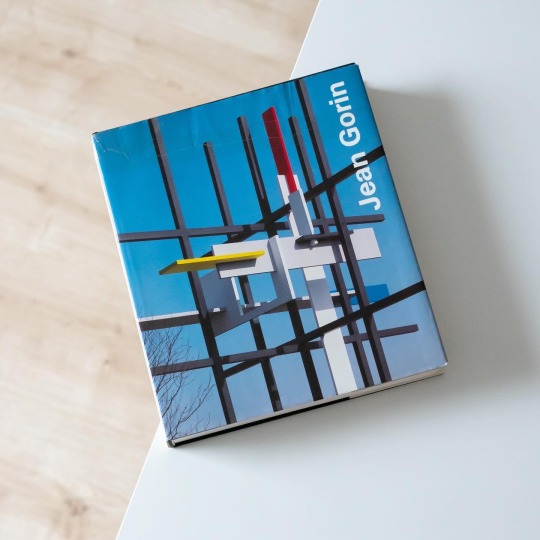#otto freundlich
Text

Otto FREUNDLICH (1878 - 1943) - Masque, 1911
45 notes
·
View notes
Text
For too long you have pressed the world into your baking tins, you gourmet,
you baker and confectioner. But you are not sweet yourself, everything is supposed to taste good for you alone, so your tables can overflow, for your
insatiable stomachs. One must get to know you, you lover of sweets, how bitter
you are when the dough is not as pliable as your greedy palate would like. For
in the one hand you have your baking tin and in the other hand sword, dagger,
canons, poison, gas and martyrs are poised to force the recalcitrant dough into
submission.
Otto Freundlich, quoted in Marcuse, 'Society as a Work of Art' (1967)
9 notes
·
View notes
Text

Otto Freundlich
Composition (1932)
11 notes
·
View notes
Text

Otto Freundlich - Kosmischer Regenbogen
3 notes
·
View notes
Text

Otto Freundlich, Die Mutter
0 notes
Text

Otto Freundlich
Cosmic Communism, Rosette II (1941)
29 notes
·
View notes
Text


French artist Jean Gorin (1899-1981) became one of the closest adepts of Piet Mondrian's Neo-Plasticism after he first saw paintings by Mondrian in a magazine in 1926 (along with works by Van Doesburg and Huszar). In the following decades and up until his death Gorin refined the example of Mondrian, expanded it with influences from Kazimir Malevich and Cesar Domela and also advanced into the third dimension.
After a long search I finally found an affordable copy of Gorin’s catalogue raisonné, written by Marianne Le Pommeré and published by Waser Verlag in 1985: obviously the catalogue contains all of Gorin’s work and hence demonstrates his multifaceted practice of an abstract geometric idiom. Gorin continuously refined and extended the spatiality of Mondrian’s example and instantly arrived at a formal language that, in the spirit of De Stijl, he also applied to three dimensional objects as well architecture: already in the late 1920s he alongside his neo-plasticist paintings developed architectures and objects in space that are clearly inspired by Soviet Constructivism. Interestingly Gorin in 1932 actually travelled to the Soviet Union in order to study art and architecture and also met with Konstantin Melnikov and Moisei Ginzburg.
Le Pommeré’s meticulous catalogue not only collects all of Gorin’s paintings, sculptures and architectural drawings but also features a lengthy biography that follows the artist’s development, contextualizes his work and also sheds light on the manifold relationships Gorin maintained with avant-garde artists and groups of the times, a network that e.g. includes Jean Arp, Wassily Kandinsky, Otto Freundlich and Georges Vantongerloo.
In view of these properties the present work catalogue is an equally beautiful and informative tome that demonstrates that the example of Piet Mondrian’s artistic principles didn’t necessarily have to lead to epigonism but in the case of Jean Gorin also inspired an original and absolutely fascinating oeuvre.
#jean gorin#monograph#neo-plasticism#modern art#geometric abstraction#art book#french art#art history#vintage book
22 notes
·
View notes
Text

Otto Freundlich, A Tree, 1927
Oil on canvas
Lenbachhaus
39 notes
·
View notes
Photo

Otto Freundlich (1878-1943) - Masque, 1911
36 notes
·
View notes
Text

Otto Freundlich (1878-1943) - Cosmic Communism, Rosette II [La Rosace II], 1941
3 notes
·
View notes
Text

(above) Das Ausstellungsgebäude "Entartete Kunst" in Berlin, 1938
The "Degenerate Art" exhibition, initiated by Minister of Propaganda Joseph Goebbels and directed by Adolf Ziegler, President of the Reich Chamber of Fine Arts, opened in Munich on July 19, 1937. It showed 650 confiscated works of art from 32 German museums. Over three million people visited this exhibition, which was shown in twelve other cities by April 1941. Works of art and cultural currents that were not in harmony with the National Socialists' understanding of art and ideals of beauty - Expressionism, Impressionism, Dadaism, New Objectivity, Surrealism, Cubism or Fauvism - were considered "degenerate", "sick" or "Jewish-Bolshevist". These works were presented with photos of deformed people to evoke disgust and trepidation in visitors. At the same time, the Munich "House of German Art" showed the "Great German Art Exhibition" with "German" art.
(below) Führer zur Ausstellung "Entartete Kunst". Verlag für Kultur und Wirtschaftswerbung; Berlin, 1937

Guide to the exhibition "Degenerate Art" Title picture based on the sculpture 'The New Man' by Otto Freundlich
Works of art and cultural currents that were not in harmony with the National Socialists' understanding of art and ideals of beauty [Expressionism, Impressionism, Dadaism, New Objectivity, Surrealism, Cubism or Fauvism] were considered "degenerate", "sick" or "Jewish-Bolshevist". These works were presented with photos of deformed people to evoke disgust and anxiety in visitors. At the same time, the Munich House of "German Art" showed the "Great German Art Exhibition" with "German" art. | Lebendiges Museum online
#degenerate art#Entartete Kunst#1930s#nazism#nazi party#censorship#kunst#art#art history#history of art
29 notes
·
View notes
Text

Otto Freundlich
Komposition (1939)
14 notes
·
View notes
Photo

2023 : “Composition” [Europe Trip Day 05 Paris]
Otto Freundlich (1911), Paris Museum of Modern Art (MAM Paris)
6 notes
·
View notes


